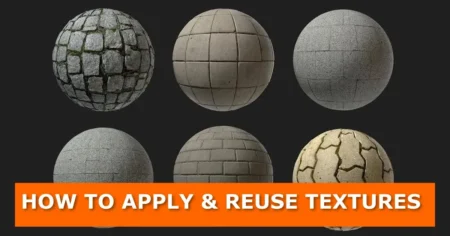How do I make 3D objects look massive in renders? This is a question 3d artists ask themselves at some point in the many projects they do. When it comes to 3D renders, the perception of scale and size can greatly impact the overall impact and realism of the scene. In this guide, we will explore some useful tips and techniques to make your 3D objects appear massive and grand in renders.
By employing these strategies, you can enhance the sense of scale, depth, and presence, ultimately creating more impactful and immersive visual experiences.
They are applicable in most 3D animation software, but we will be using Blender.
Here are tips to make 3D objects look massive in renders
Tip 1: Position of the camera
To make something appear bigger than a human, position the camera low and point it up toward the object. This is because in the real world, anything bigger than us we look up at, and anything smaller than us we generally look down at. By following this rule, humans can quickly recognize the size of an object.
Tip 2: Depth of field
To increase the perception of size in a render, use a higher f-stop value to increase the depth of field. Small objects typically have a lot of depth of field, while larger objects do not. This can be observed by focusing on your finger and noticing the blurry background, whereas a larger object such as a car will have less blur in the background.
Tip 3: Focal length
Lower the focal length to widen the camera’s angle and increase the perceived distance between foreground and background objects. This creates a sense of massiveness in the scene. To make 3D objects look massive in renders when taking up the entire frame, increase the perceived distance between their forward and backward parts.
Tip 4: Use a reference object
To help viewers understand the scale of a massive object in a render, include a real-world object that they can use as a reference point. This could be something they are familiar with and know the size of, such as a bird or a human. By placing this object next to the large object, viewers can extrapolate the scale and get a better understanding of its size. This technique is often used in artwork, movies, and photography to create a sense of massiveness and awe.
Tip 5: Use atmospheric diffusion
The atmosphere between the viewer and a distant object causes shadows to be less pronounced and give them a bluish tint. To make 3D objects look massive in renders, add a bit of volumetric effect using a principled volume shader in Blender. Adding a small amount of density and emission can create a slight tint that increases as the object moves further away from the camera, making it look bigger.
Tip 6: Put more fine-grain detail into your model
The amount of detail on an object can make 3D objects look massive in renders. The larger the object, the more details it can accommodate. However, it’s important not to overdo it. Adding too much detail can be distracting. Instead, focus on adding detail where the viewer’s attention should be. Generally, smaller details can make an object appear bigger.
Tip 7: Make movement that you animate slower and appear heavier
Last but not final, to make 3D objects look massive in renders, make their movements slower. Combine this with the camera positioning and environment tips previously mentioned to create a realistic and impactful portrayal of a large-scale object in your virtual camera. Following these guidelines will allow you to create impressive visuals of large-scale objects in no time.
Conclusion
In conclusion, these tips and techniques are crucial to make 3D objects look massive in renders. By considering the scale and implementing these strategies, you can enhance the impact and realism of your renders. Embrace these practices, experiment, and refine your skills to create awe-inspiring visuals that leave a lasting impression on viewers.






